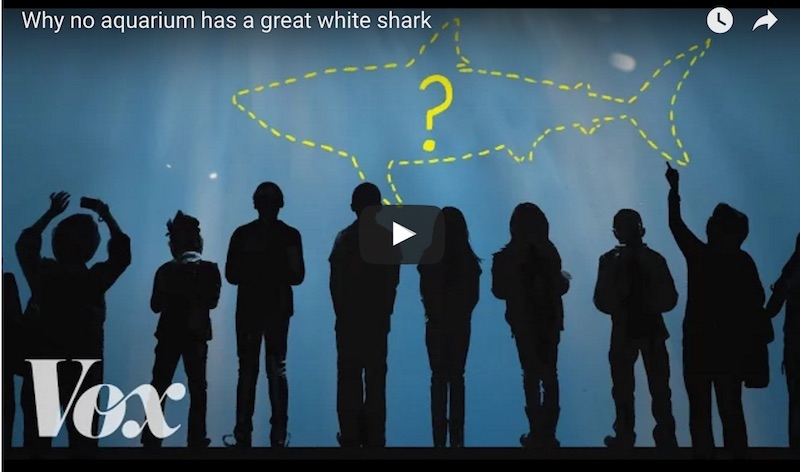The Great White Shark, Carcharhinus carcharodon, is the undisputed predator of the oceans, and one of the biggest fish swimming in temperate seas. Growing up to 20 feet long, but usually 15 feet in adult females, you’ll need a very large tank to keep a white shark in an aquarium, to the tune of 1 million gallons, a whole lot of dead fish to feed it. Oh yeah, and you need to be the Monterrey Bay Aquarium.
All kidding aside, public aquariums display sharks as big as white sharks all the time, and some of them have even specialized in keeping the biggest of them all, the whale shark with some success, so how such an iconic creature as the great white shark is not on display at aquariums around the world?
It turns out that the pelagic nature and top-of-the-food-chain behavior of white sharks make them terrible candidates for life in an ocean with walls. Even with a massive research budget and a whole staff of marine scientists and biologists, the Monterrey Bay Aquarium in California is the only institution that can claim to have ‘successfully’ kept a great white shark in an aquarium.

Success is a relative term when it comes to the aquarium life of the ocean’s top predator, as it took Monterrey Bay Aquarium multiple tries, and multiple immediate failures just to keep one specimen almost six months in their million gallon open ocean exhibit. This ‘Aquarium’ is so massive that the walls of the exhibit nearly disappear in the blueness of the water, but even this specially designed exhibit wasn’t large enough.
Pelagic animals such as sharks are used to swimming vigorously to aid in their breathing, and they are not used to encountering walls. In the open ocean exhibit the great white shark often ran into walls and rubbed parts of its snout to raw. Even when it wasn’t playing bumper cars with the sides of the tank the juvenile great white shark became an aggressive eater, eventually killing and eating several of its tank mates.
If you couldn’t tell by now, the title of this post is a little bit facetious and the white shark makes a terrible candidate for an aquarium fish, no matter how large, or how many resources you throw at the challenge. This video from Vox Media chronicles the saga of public aquariums attempting to keep this fish in captivity, and it turns out that this is definitely one fish that should definitely be left in the ocean.



